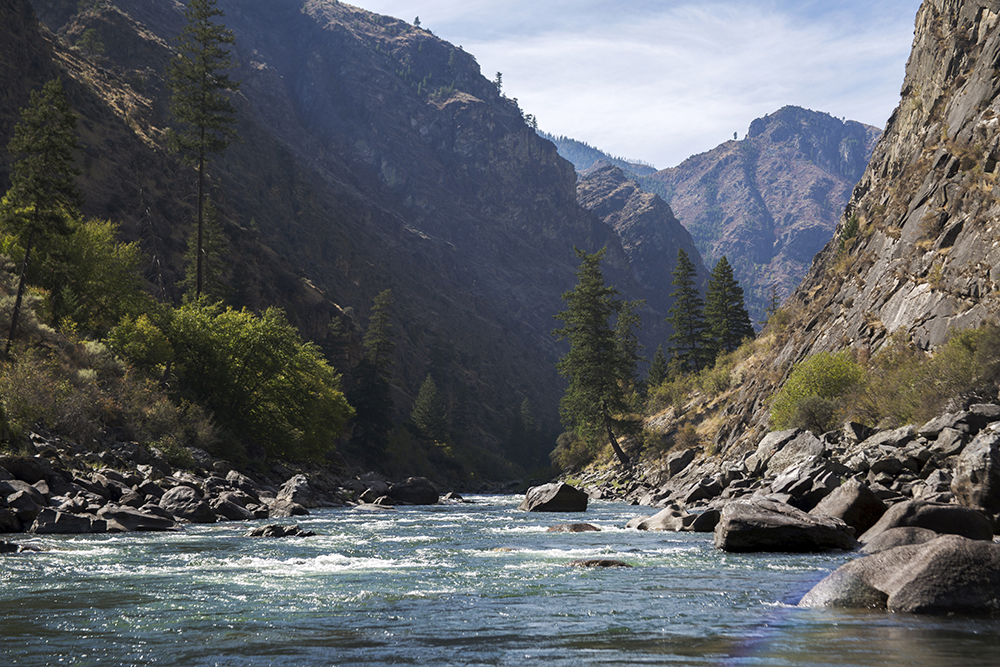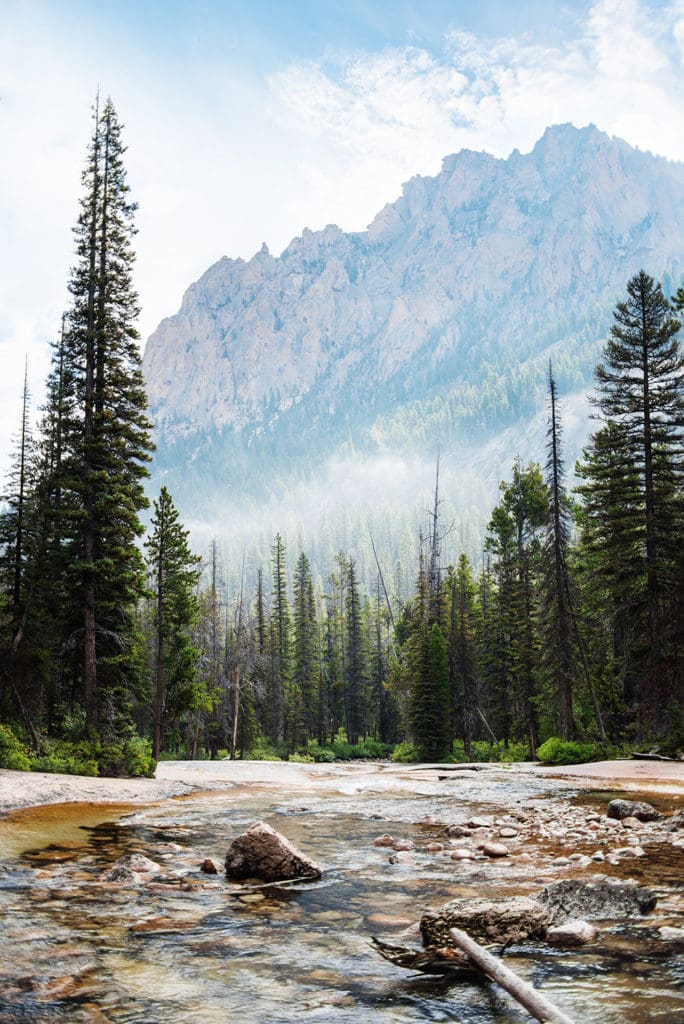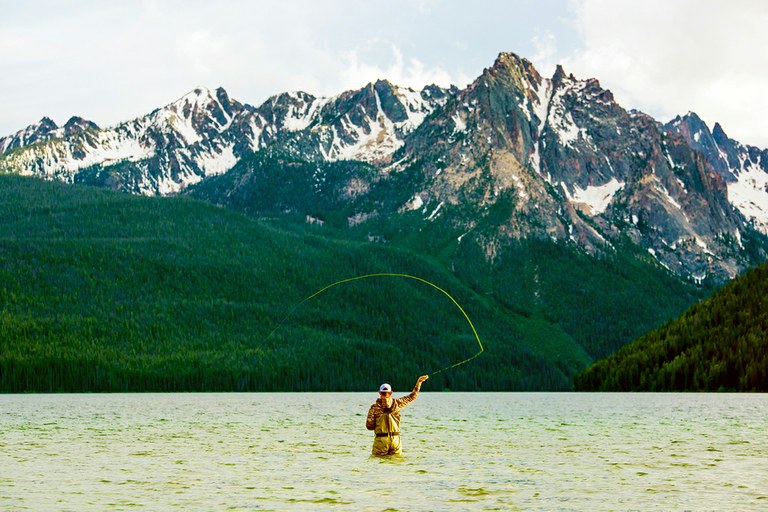Ask Y2Y U.S. program director Kim Trotter about Idaho’s Salmon River and she’ll paint you a picture. It’s an image she’s appreciated since her youth.
Starting in the Sawtooth Mountains of central Idaho, the Salmon’s beginnings are humble, Kim says, with headwaters just a few feet wide.
Picking up water from tributaries like the Yankee Fork, the Pahsimeroi, Lemhi and many others, the river becomes a powerhouse as it flows through the state’s River of No Return Wilderness and other craggy, isolated mountain ranges.
The Salmon River is one of the longest undammed rivers in the lower 48 states, draining a mountainous area about the size of Maryland.
It got its name from the seemingly infinite salmon and steelhead runs that historically swam 700 miles (1,127 km) from the ocean to spawn in its headwaters.
But now salmon counts at Redfish Lake — named for its color during the annual sockeye spawning — have dwindled to just a few some years, in part due to four Snake River dams downstream.

Not only are salmon, steelhead and bull trout important food sources for area wildlife, they play key roles in this ecosystem, bringing nutrients from the rich ocean waters all the way to the headwaters when they spawn and die. Fewer fish means forests suffer.
Fish rely on healthy rivers free of barriers with pockets of cold water — needs threatened by industrial, agricultural and recreational development on public land.
And then there are impacts of climate change: shifting water levels or warmer temperatures, for example.
Recognizing the need for healthy rivers in this area, Y2Y is working to protect ecological function in Idaho’s High Divide. This is an exciting time, Kim says, as Y2Y drives conservation forward through community and federal processes such as land-use planning.
There is opportunity now as regional and federal land agencies update management plans on more than 7.4 million acres (2.9 million hectares) of public land — about the size of three Yellowstone National Parks.
Y2Y recommendations include management actions to endure the effects of climate change, keeping habitat connected and maintaining biodiversity while balancing the needs of economy and community such as jobs and recreation.
This long-term process includes working with many community members, sportsmen and other conservation groups such as Trout Unlimited and Idaho Conservation League.
“Along with partners, Y2Y is identifying where different management tools benefit fish and wildlife, based on data and climate models,” Kim says.
For example, climate modelling is used to project where cold, clean water will remain in future as streams heat up.
“We’re using the best available science to help us determine what must be protected to maintain connectivity on land and in water, and where we can all agree on other uses the community will support,” she says.
The issues of climate change and water connectivity impact more than water or fish. The goal is to sustain wildlife in all areas.
Thanks to you
We are able to seize this rare opportunity to work on long-term plans with partners to address the issues of connectivity, climate change and habitat suitability.
Your support helps us make ripples for water planning on and around rivers such as Idaho’s Salmon, ensuring they are there for future generations to enjoy.

Cold water refugia
With climate change comes warmer waters. This is bad news for fish, such as salmon and steelhead and bull trout, that rely on pockets of colder water as they migrate to spawning areas.
Thanks to dedicated donors, we’re able to locate, protect and restore these zones along rivers such as Idaho’s Salmon and B.C.’s Columbia.

Fish feed forests
In areas such as Idaho’s High Divide fish are an important part of the food chain. As salmon bodies break down following spawning, they add nutrients like nitrogen into riverside plants and trees.
Studies show trees in some salmon-stocked areas grow up to three times faster than those not near salmon.


